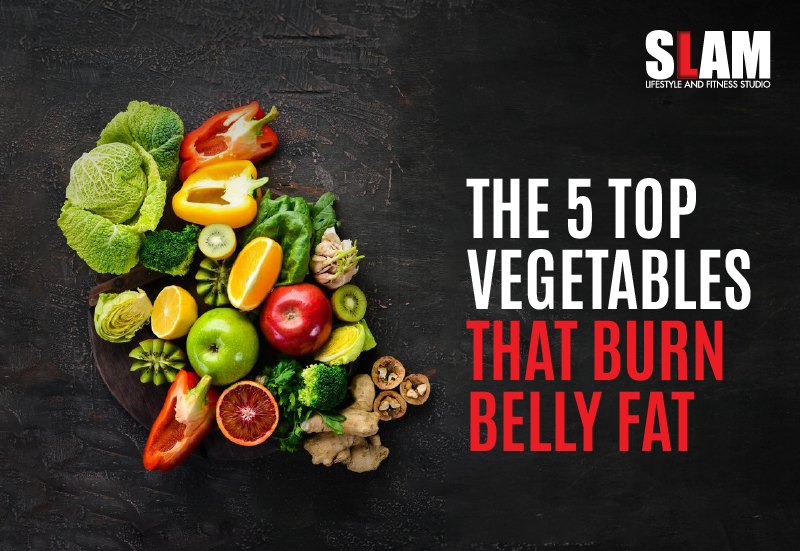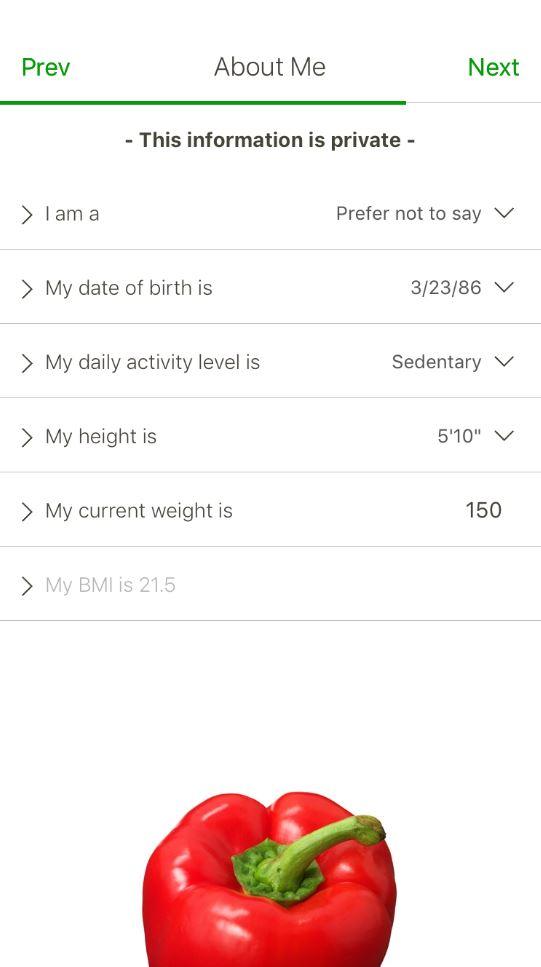Achieving a flatter lower belly is a common fitness goal that requires a strategic combination of diet and lifestyle adjustments. Recent nutritional research highlights bell peppers as a powerful ally in this journey, thanks to their rich nutrient profile and metabolism-boosting properties. This article will guide you through a practical, science-backed approach to shedding up to 6cm from your lower abdomen in just six months by incorporating bell peppers into your daily routine. Discover how this vibrant vegetable can support fat loss, enhance digestion, and contribute to a leaner, healthier midsection.
Table of Contents
- Understanding the Role of Bell Peppers in Reducing Lower Belly Fat
- Nutritional Profile of Bell Peppers and Their Impact on Metabolism
- Incorporating Bell Peppers Into Your Daily Diet for Optimal Fat Loss
- Synergizing Bell Peppers with Exercise to Maximize Lower Belly Flattening
- Tracking Progress and Adjusting Bell Pepper Intake for Consistent Results
- Potential Health Benefits and Precautions When Using Bell Peppers for Weight Loss
- Q&A
- In Retrospect

Understanding the Role of Bell Peppers in Reducing Lower Belly Fat
Bell peppers are more than just a colorful addition to your meals; they play a significant role in targeting stubborn lower belly fat. Rich in antioxidants, vitamins, and a unique compound called capsaicin, bell peppers naturally boost your metabolism. This metabolic enhancement encourages your body to burn calories more efficiently, directly supporting fat reduction around the midsection. Incorporating bell peppers into your diet can help modulate insulin sensitivity, reducing fat accumulation in the abdominal area.
Besides their thermogenic properties, bell peppers are exceptionally low in calories while high in fiber. This combination promotes satiety, helping you control appetite and minimize overeating, which is crucial for fat loss. Fiber also improves digestive health and aids in the elimination of toxins, promoting a flatter stomach. Regular consumption can help regulate blood sugar levels, preventing insulin spikes that contribute to lower belly fat storage.
The nutritional benefits of bell peppers can be summarized as follows:
- Rich in Vitamin C: Supports fat metabolism and reduces cortisol, a stress hormone linked to belly fat.
- High Fiber Content: Enhances digestive efficiency and prolongs fullness.
- Capsaicin Presence: Increases energy expenditure and fat oxidation.
- Low-Calorie Density: Enables larger servings without calorie overload.
| Component | Benefit | Impact on Lower Belly Fat |
|---|---|---|
| Vitamin C | Boosts metabolism & combats stress | Reduces fat storage |
| Fiber | Enhances digestion & controls hunger | Prevents fat accumulation |
| Capsaicin | Thermogenic compound | Increases calorie burn |
| Low Calories | Supports calorie deficit | Aids weight loss |

Nutritional Profile of Bell Peppers and Their Impact on Metabolism
Bell peppers are nutritional powerhouses that contribute significantly to boosting metabolism and promoting fat loss, especially in the stubborn lower belly area. Loaded with vitamins A, C, and B6, these vibrant vegetables stimulate metabolic enzymes and enhance the body's fat-burning capabilities. Vitamin C, in particular, plays a critical role in carnitine synthesis, a compound essential for converting stored fat into energy, thus directly impacting weight reduction.
Beyond vitamins, bell peppers are an exceptional source of antioxidants like capsaicin-a compound not only responsible for their subtle heat but also for elevating the body's thermogenic rate. This increased thermogenesis leads to higher calorie expenditure even while at rest. Their high water content and low calories make them ideal for maintaining satiety, reducing overall calorie consumption without feeling deprived.
Consider the following breakdown of bell pepper nutrients and their metabolic role:
| Nutrient | Metabolic Function | Health Benefit |
|---|---|---|
| Vitamin C | Enhances fat oxidation | Improves fat loss efficiency |
| Vitamin B6 | Regulates energy metabolism | Supports muscle function and reduces fatigue |
| Capsaicin | Boosts thermogenesis | Increases calorie burning |
| Fiber | Promotes satiety | Controls appetite and stabilizes blood sugar |

Incorporating Bell Peppers Into Your Daily Diet for Optimal Fat Loss
Integrating bell peppers into your daily meals is a smart and flavorful strategy to accelerate fat loss, particularly around the stubborn lower belly area. These vibrant vegetables are low in calories but high in fiber, which helps you feel full longer and reduces overeating. Their natural sweetness can also satisfy sugar cravings, making them an excellent substitute for less nutritious snacks.
To maximize benefits, consider these simple yet effective ways to include bell peppers in your diet:
- Add diced bell peppers to your morning omelet for a nutrient-packed start to the day.
- Use roasted bell peppers as a flavorful addition to salads or grilled meats.
- Blend them into smoothies or juices to enrich your beverage with vitamins and antioxidants.
Below is a quick reference table showcasing the fat-burning properties and nutritional highlights of bell peppers compared to other common vegetables, making it easier for you to make informed dietary choices:
| Vegetable | Calories (per 100g) | Fiber (g) | Vitamin C (mg) | Fat-Burning Support |
|---|---|---|---|---|
| Bell Peppers | 31 | 2.1 | 127.7 | High (Boosts metabolism and reduces fat storage) |
| Broccoli | 34 | 2.6 | 89.2 | Moderate (Rich in fiber for satiety) |
| Carrots | 41 | 2.8 | 5.9 | Moderate (Supports digestion) |

Synergizing Bell Peppers with Exercise to Maximize Lower Belly Flattening
Integrating bell peppers into your fitness regimen can create a powerful alliance that targets stubborn lower belly fat more effectively. Bell peppers are rich in vitamin C, which boosts collagen production to help tone the skin, and antioxidants that reduce inflammation post-workout. Consuming them before exercise can improve fat oxidation, enhancing the body's ability to burn fat specifically around the lower abdomen.
Combining bell peppers with targeted exercises accelerates results. Focus on exercises that engage the lower abdominal muscles such as:
- Leg raises to stimulate the lower belly muscles.
- Plank variations to build core strength and stability.
- Bicycle crunches to activate obliques and lower abs.
Eat bell peppers about 30 minutes to an hour before these workouts to provide your body with natural energy and antioxidants that support endurance and recovery.
| Exercise | Duration | Bell Pepper Benefit |
|---|---|---|
| Leg Raises | 3 sets of 15 | Vitamin C for muscle repair |
| Planks | Hold for 45 seconds, 3 reps | Antioxidants reduce inflammation |
| Bicycle Crunches | 3 sets of 20 | Natural energy boost |

Tracking Progress and Adjusting Bell Pepper Intake for Consistent Results
Consistency is key when aiming to reduce belly fat with bell peppers. Begin by maintaining a detailed journal tracking your daily intake of bell peppers alongside your waist measurements. This not only helps to quantify progress but also highlights any correlation between your dietary patterns and physical changes. Utilize tools such as measuring tapes and photos taken weekly under similar conditions to ensure accurate and motivating feedback.
It's important to recognize that your body's response may fluctuate due to factors like metabolism, activity level, and overall diet. If progress plateaus after a few weeks, consider adjusting the quantity or form of bell peppers-raw, roasted, or blended smoothies-to optimize nutrient absorption and satiety. Additionally, mixing different bell pepper varieties can enhance your body's response through a broader spectrum of vitamins, antioxidants, and fiber.
Below is a simple guideline table to help you adjust your bell pepper intake based on your progress milestones:
| Progress | Bell Pepper Intake | Action |
|---|---|---|
| 0-2 cm reduction | 1 medium bell pepper/day | Maintain current intake |
| 2-4 cm reduction | 1.5 medium bell peppers/day | Increase portion gradually |
| 4-6 cm reduction | 2 medium bell peppers/day | Maintain and diversify preparation |
| Plateau reached | 1-2 medium bell peppers/day | Review overall diet and exercise |

Potential Health Benefits and Precautions When Using Bell Peppers for Weight Loss
Incorporating bell peppers into your diet can support weight loss efforts due to their low calorie content and high fiber levels. Rich in vitamins A, C, and antioxidants, bell peppers not only enhance metabolism but also promote satiety, which helps curb overeating. Their natural sweetness makes them a perfect substitute for high-calorie snacks, facilitating a reduction in overall calorie intake without sacrificing flavor.
Despite these benefits, it's important to consume bell peppers mindfully. Some individuals may experience digestive discomfort, such as bloating or gas, especially if eaten in large quantities or raw. To minimize these side effects, consider cooking bell peppers lightly, which can improve digestibility while preserving most of their nutrients. Additionally, those with sensitivity to nightshade vegetables should monitor their intake carefully to avoid potential adverse reactions.
For optimal results, pair your bell pepper consumption with a balanced diet and regular physical activity. Below is a quick comparison of the nutritional content per 100g of raw bell pepper versus cooked:
| Nutrient | Raw Bell Pepper | Cooked Bell Pepper |
|---|---|---|
| Calories | 31 kcal | 27 kcal |
| Vitamin C | 127.7 mg | 80.4 mg |
| Fiber | 2.1 g | 1.5 g |
| Antioxidants | High | Moderate |
- Tip: Combine bell peppers with other colorful vegetables for a nutrient-dense, fat-burning meal.
- Precaution: Avoid excessive intake if sensitive to bell peppers or nightshades to prevent inflammation.
- Suggestion: Incorporate bell peppers as part of balanced snacks or meals to maximize weight loss benefits.
Q&A
Q&A: How to Flatten Your Lower Belly – Drop 6cm in 6 Months Using Bell Peppers
Q1: Can bell peppers really help reduce lower belly fat?
A1: Yes, incorporating bell peppers into your diet can support fat loss, including in the lower belly area. Bell peppers are low in calories, high in fiber, and packed with vitamins, which enhance metabolism and promote satiety, making it easier to control overall calorie intake.
Q2: What makes bell peppers effective for targeting belly fat?
A2: Bell peppers contain capsaicin and antioxidants that boost metabolism and reduce inflammation. Their high fiber content aids digestion and prevents bloating, contributing to a flatter abdominal area over time when combined with a balanced diet and regular exercise.
Q3: How much can I realistically expect to lose in 6 months by adding bell peppers to my diet?
A3: While individual results vary, a reduction of around 6 cm in lower belly circumference is achievable with consistent dietary changes, including a daily increase in bell pepper intake, alongside proper hydration, balanced macronutrients, and physical activity.
Q4: What is the best way to include bell peppers in my daily meals?
A4: For optimal results, consume raw or lightly cooked bell peppers to preserve their nutrients. Add them to salads, stir-fries, smoothies, or as snacks. Aim for at least one to two cups of chopped bell peppers daily.
Q5: Are there any risks or side effects of increasing bell pepper consumption?
A5: Bell peppers are generally safe and well-tolerated. However, excessive consumption might cause mild digestive discomfort in sensitive individuals. If you experience any adverse effects, reduce intake and consult a healthcare professional.
Q6: Can bell peppers alone flatten the lower belly, or do I need other lifestyle changes?
A6: Bell peppers are a helpful component but not a standalone solution. Effective lower belly fat reduction requires a comprehensive approach, including balanced nutrition, regular exercise, stress management, and sufficient sleep.
Q7: How does fiber in bell peppers contribute to a flatter belly?
A7: The fiber in bell peppers promotes digestive health by improving bowel regularity and reducing bloating. This can diminish abdominal distension and assist in maintaining a slimmer waistline.
Q8: Do different colors of bell peppers offer distinct benefits?
A8: Yes, red, yellow, and orange bell peppers have slightly varying antioxidant profiles. Red bell peppers contain higher levels of vitamin C and beta-carotene, which may enhance metabolic benefits, but all colors contribute valuable nutrients supportive of fat loss.
This Q&A provides a clear, authoritative understanding of how bell peppers can aid in flattening the lower belly while emphasizing the importance of a holistic approach.
In Retrospect
In conclusion, consistently incorporating bell peppers into your diet is a natural and effective strategy to target and flatten your lower belly over time. Their metabolism-boosting properties, combined with a balanced routine of nutrition and exercise, can help you achieve a noticeable reduction of up to 6cm in just 6 months. To further accelerate your progress and support fat burning, the Sumatra Slim Belly Tonic supplement comes highly recommended. This powerful formula is designed to enhance your body's natural fat-burning processes, making it an ideal companion on your journey to a slimmer, healthier midsection. By combining these dietary choices with the right supplementation, you can confidently work towards lasting results and improved overall wellness.








